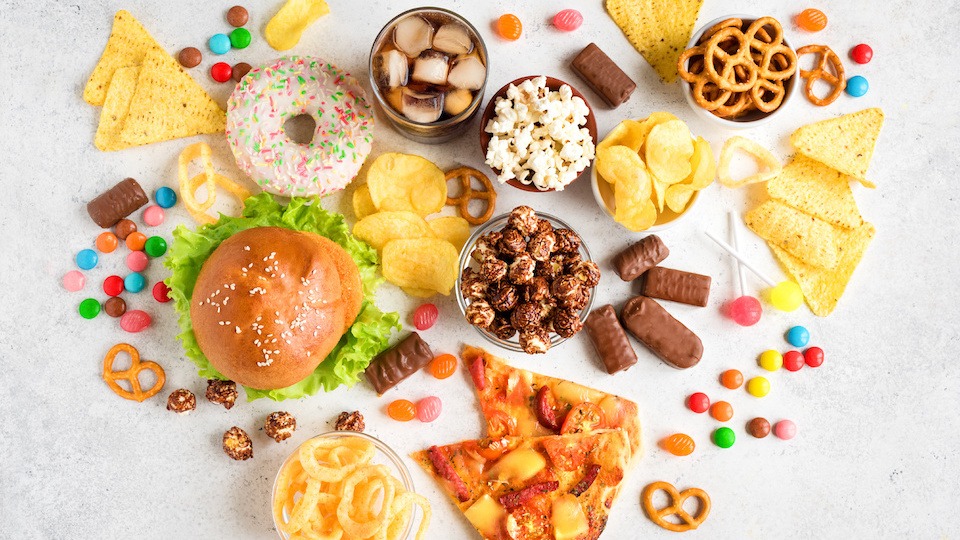For breakfast, it’s a bacon, egg, and cheese on an English muffin with a large coffee with extra cream and sugar. Lunch is a sub with ham and swiss, a bag of chips, and an energy drink. And dinner is usually a cheeseburger, fries, and a soda. Oh, and most days, every meal comes with some dessert…a donut, a cookie, or an ice cream sundae. For snacks in between…another bag of chips or a candy bar.
Welcome to the Standard American Diet…the SAD subject of today’s useful article by my UpWellness team. I hope you find it useful.
Be Well,
-Dr. Josh
You may have heard that the Standard American Diet, referred to as S.A.D., is sadder than even once thought. America is one of the most prosperous countries on planet earth. We have knowledge, resources, money, and power, but the truth is, we are dying sooner and have skyrocketing rates of disease, unlike those found in other developed nations. Why? Much of the blame can be laid on what is known as the Standard American Diet – the diet that the majority of Americans consume. Let’s take a closer look at the very “sad” truth, keeping in mind that what we put in our mouths matters significantly to our health and longevity.
What is the S.A.D.?
When half of all plant-based calories in your diet come from french-fried potatoes, you must understand that you are in trouble. However, this is the case with the majority of Americans. Only 6% of people consume calories from health-promoting fruits, nuts, seeds, vegetables, and whole grains. In fact, 63% of all calories consumed in this country come from refined and processed foods, including potato chips, packaged desserts, etc. We consume 25% of calories from animal products and 12% from plant-based foods.
What does your body need to thrive?
One of the first things to do is become educated about what your body needs to thrive and survive. Understand that there is a tremendous difference between foods that fuel and fight disease and those that can rob you of years and even your life. Food is very, very powerful. Once you understand this, you can begin to formulate a dietary plan for your life that will empower your physical and mental state. You will look better, feel better, and may even live longer without succumbing to any lifestyle diseases such as heart disease, cancer, or diabetes.
Your relationship with food must be personal, and it takes time and energy to figure out what is best for you. However, the first step for everyone is to begin to eat real food, food that has roots. Namely, food that is not processed or contrived in a laboratory.
Federal report finds that plant-based diet is best
This may not make everyone super happy, but the truth is, a diet rich in plants is best for health and wellness. According to the 2015 Dietary Guidelines Committee, a diet higher in plant-based foods and low in animal-based foods is not only healthier but also better for the environment. The committee defined a healthy dietary pattern as one that puts vegetables, fruits, and whole grains at the top of the list and red and processed meats at the very bottom.
The weighty report comprised by the committee states that, “the quality of the diets currently consumed by the U.S. population is suboptimal overall and has major adverse health consequences.” A large gaping hole was found between a healthy diet and the S.A.D. diet,
“On average, the U.S. diet is low in vegetables, fruit, and whole grains, and high in sodium, calories, saturated fat, refined grains, and added sugars.”
A deeper look at what the committee found
In the over 500 page report, the advisory group cited the following regarding the standard American diet:
- Half or more of American adults have one or more chronic diseases that are related to poor diet and inactivity.
- More than two-thirds of American adults and one-third of children are overweight or obese.
- Diseases that can be prevented include cardiovascular disease, hypertension, type 2 diabetes, and some cancers.
- A focus on disease treatment as opposed to prevention, puts a tremendous strain on health care cost and diminishes overall health.
In addition, for the first time, the committee, comprised of nutritional experts, made a connection between healthy eating and a healthy planet. They concluded that a plant-based diet was far better for the environment than an animal-based diet.
“Quantitative modeling research showed how healthy dietary patterns relate to positive environmental outcomes that improve population food security. Moderate to strong evidence demonstrates that healthy dietary patterns that are higher in plant-based foods, such as vegetables, fruits, whole grains, legumes, nuts, and seeds, and lower in calories and animal-based foods are associated with more favorable environmental outcomes (lower greenhouse gas emissions and more favorable land, water, and energy use) than are current U.S. dietary patterns.”
What this means for you
This report is only one of the countless others that outline the benefit of eating a non-processed, whole-food diet comprised of mostly plants. According to author and researcher Michael Pollan, the most sensible diet is to “Eat food. Not too much. Mostly plants.” Why? Plants have more nutritional value than most food items. They are loaded with healthy protective antioxidants and provide energy at a low cost (they are low in calories). Seeds and nuts are also highly valuable since they contain healthy fats and protein that the body needs to function. Eating a highly-processed diet loaded with junk food provides no valuable nutrition and is really a waste of money. Eating mostly plants, organic, local, and seasonal foods will reward you with a healthy body and mind!
We all have to eat, which means we all get to make a choice. Are your choices good choices?
-The UpWellness Team









